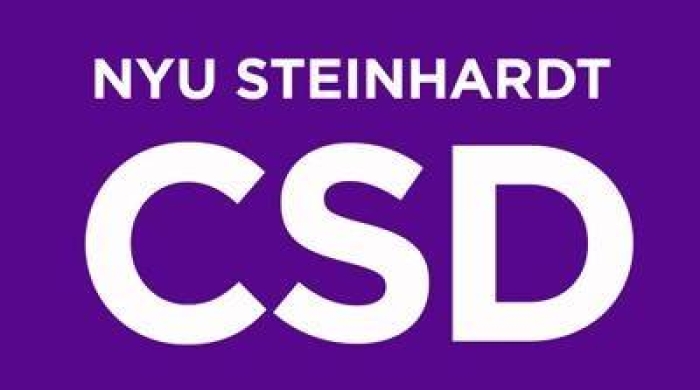Vision
The NYU Department of Communicative Sciences and Disorders envisions our role as a leading department in research and teaching within the university and across the field and related disciplines. Our location in New York City provides a wealth of opportunities to educate our students and to treat individuals with communication and swallowing disorders in our on-campus clinic and diverse externship placements. We have established valuable relationships across the university that have resulted in exciting interdisciplinary teaching and collaborative research. Our goal is to have a substantial presence in the field, nationally and globally.
Mission
The mission of the department is to provide comprehensive and evidence-based training for our students, to expand the field's knowledge base through rigorous scientific inquiry, and to build on the cultural and linguistic diversity of New York City to achieve these goals.
Program Description
NYU Communicative Sciences and Disorders offers rigorous training for students seeking the highest level of education in speech-language pathology, with faculty who are leaders within the U.S. and in the world in their fields of research.
Our department features, residentially and online, a strong master’s program for training speech-language pathologists (SLPs), both academically and clinically. In addition to our master’s program, we offer undergraduate education in communicative sciences and disorders, as well as a robust doctoral program, which trains future researchers in communicative sciences and disorders.
Our space houses a speech-language and hearing clinic, with state of the art technology to allow our students to provide affordable evaluation and treatment to children and adults with communication disorders. Pediatric and adult externship placements at a wide range of sites throughout New York City and beyond further our students’ opportunities to treat individuals with communication and swallowing disorders across the lifespan.
NYU CSD faculty are leaders in the field, engaged in cutting edge research in communicative sciences and disorders, as well as related disciplines. The number of publications per faculty member, along with the number of federally funded grants, has sharply increased over the past five years. Our faculty members have prominent roles as journal editors and reviewers of manuscripts, grants, and conference submissions. CSD faculty members present their scholarly work at national and international conferences, workshops, and seminars.
Program Goals
Our primary goal is to become a top-ranked graduate program in CSD by:
- Continuing to increase the research productivity of the CSD faculty;
- Continuing to increase external grant funding to support the mission and growth of the department;
- Continuing to recruit strong graduate students;
- Continuing to develop interdisciplinary collaborations and to launch new didactic initiatives;
- Further developing our relationships with Rusk Rehab and the NYU Langone Medical Center;
- Expanding our externship program across the U.S., for both our residential and online programs;
- Continuing to enhance the clinical use of technology;
- Securing endowment from donors who can support our clinical operation including new technological developments, community service experiences, expanded clinical research and additional clinical and research space;
- Continuing to strengthen our alumni relationships.
Strategic Plan
- Values Driven Leadership
- Train Leaders in the field with a focus on equity, social justice, and community engagement
- Academic Research & Clinical Excellence
- Continue to expand research capacity, cementing reputation as a top research program in the field
- Enhance culturally and socially responsive curriculum at the MS level
- Expand Undergraduate program curriculum
- Reassess direction and plan for additional degree and certificate programs as appropriate
- Innovation
- Increase interdisciplinary partnerships throughout NYU Steinhardt that will support interprofessional education
- Continue to expand CSD research programs
- Become leaders in telepractice, both in the clinical and research domains
- Social Impact
- Increase diversity and foster inclusion in the research and clinical pipelines
- Commit to increasing broad representation in all events and opportunities
- Global Engagement
- Increase Global course offerings including returning to Sweden and offering new global opportunities in Abu Dhabi

